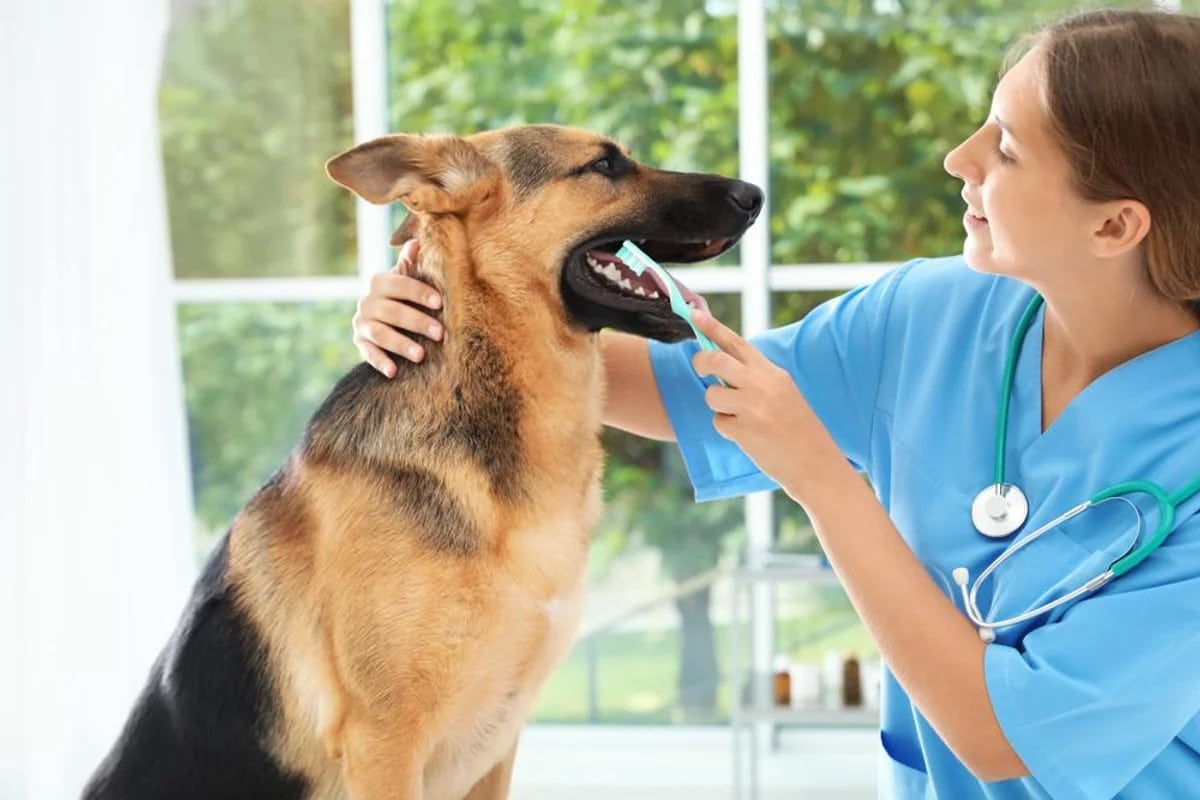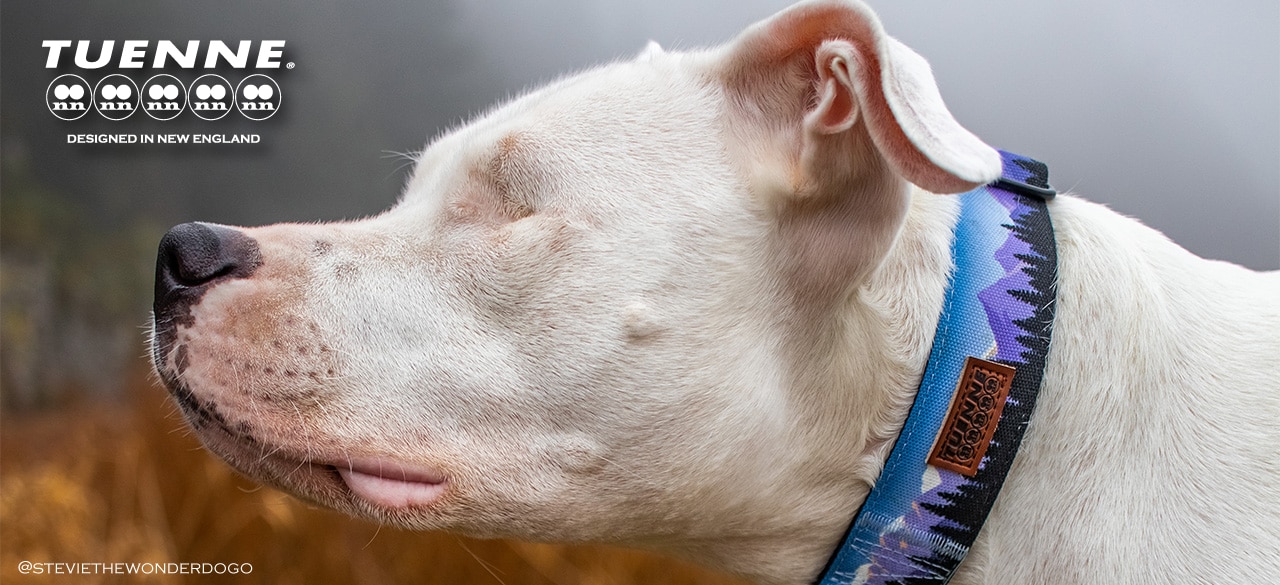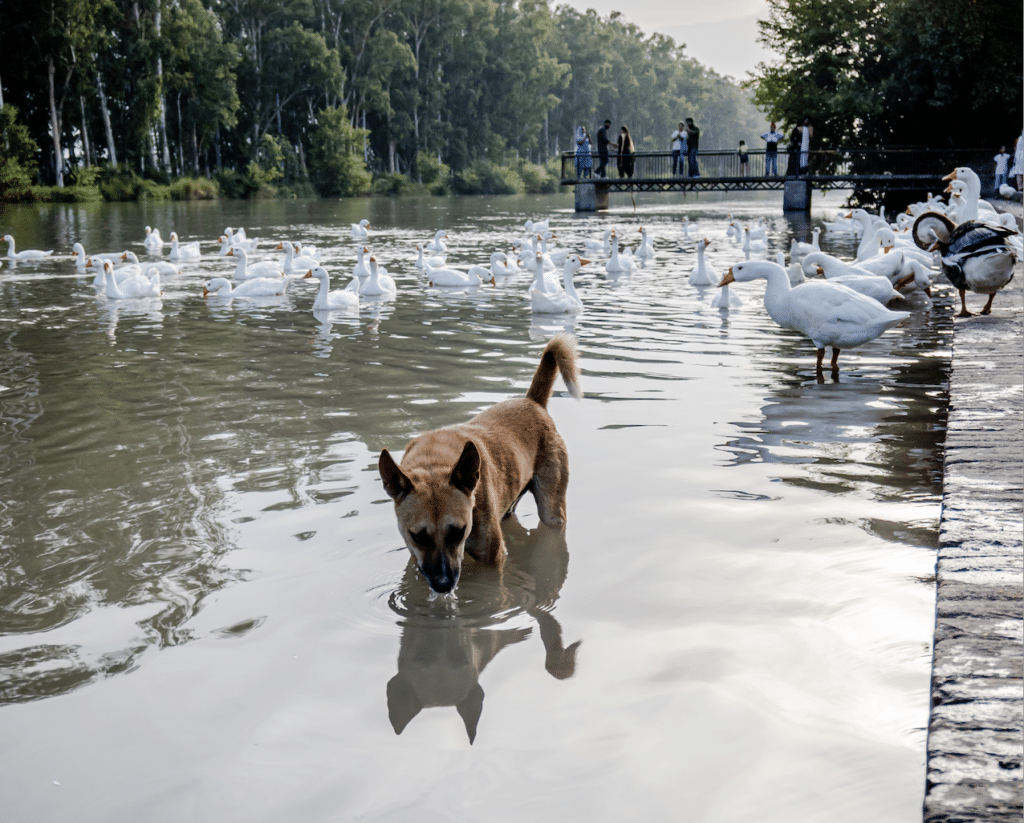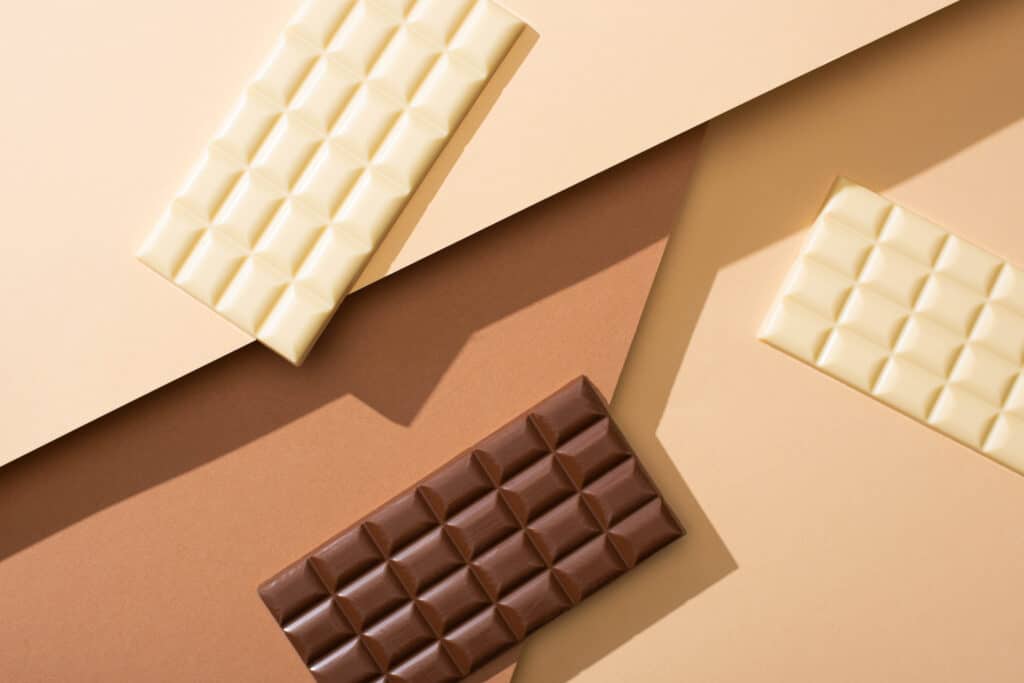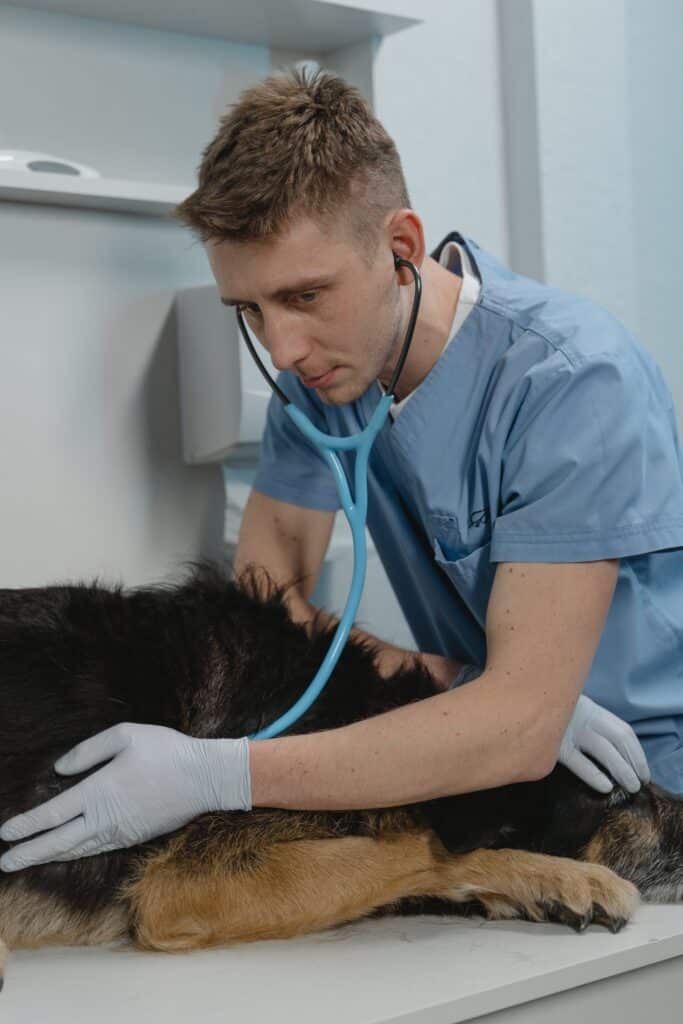Look at your dog’s perfect face right now. Go ahead, become entranced by the warm eyes, fluffy ears, and sweet nose. It’s enough to make you want to bend down for kisses. But then you’re given an open-mouth pant that fills your nostrils with a warm aroma reminiscent of dog food, soured milk, and toilet bowl. How much do you want to kiss your dog now?
This all too common “doggy breath” can easily result if your dog isn’t brushing on a daily basis (like you are). Fortunately, the solution isn’t complicated—but it is our responsibility as our dog’s companion to enact it. With a basic awareness and a few preventive tactics, you can keep your pup’s breath fresh and prevent other, more serious dental issues from occurring.
Periodontal disease (aka dental disease) is the most common disease diagnosed in dogs: by three years of age, 80% of dogs will be diagnosed with it. The disease results from an accumulation of bacteria, plaque, tartar; a subsequent inflammation occurs above and below the gumline. This is where “doggy breath,” or halitosis, begins. While your dog may not be self-conscious about their breath, there could be much more going on than meets the nose.
Unmanaged, ongoing periodontal disease can result in chronic pain, infection, and ultimately, decreased quality of life. Studies have found associations between the severity of periodontal disease and systemic inflammation affecting the heart and various other internal organs, resulting in poor overall health.
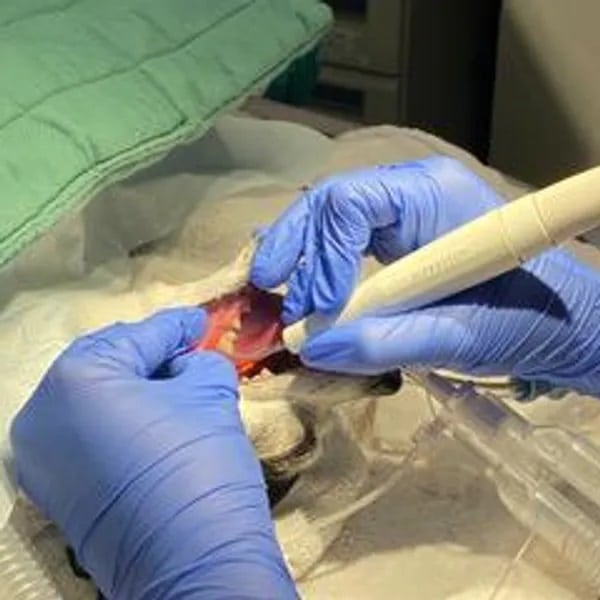
A dog under anesthesia for a deep clean
Photo by Dr. Ng
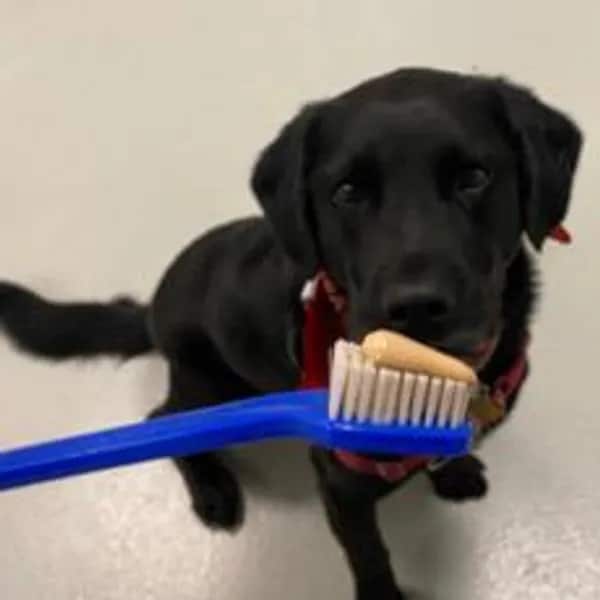
Dr. Ng attempting to brush his dog’s teeth
Photo by Dr. Ng
So now that you’re aware periodontal disease is a real threat, how do you know if your dog is a victim? Unless your dog won’t let you near their mouth at all, it doesn’t take a doctor to tell what’s going on in there. Flip a lip and take a look. Instead of healthy pink gums sprouting pearly white, clean teeth, you may notice bright red or bleeding gums (indicating gingivitis) and teeth ranging in color from off-white to yellow, brown, or grey. Often, the hardened grey layer on teeth represents “calculus,” which is the build-up of bacterial plaque that has become calcified by salivary minerals.
Even without flipping the lip, you may recognize some outward signs of periodontal disease. Think about how you feel when you have a toothache. There’s no reason our dogs wouldn’t feel the same way; they just wouldn’t complain about it like we do. Instead, you might notice him chewing differently (like only using one side of their mouth), eating more slowly, or dropping food. In addition, your dog may not be as excited to chew on toys that they previously enjoyed, or you may notice an excessive amount of blood on chew toys. Sometimes, you may spot a swelling along the maxilla (upper jaw) or mandible (lower jaw), indicating a tooth root abscess. Over time, weight loss may occur secondary to the oral pain.
If you do notice any of these signs, it’s time to bring your furry friend to the vet. Other diseases may be confused with periodontal disease, and your veterinarian can closely examine the oral cavity to assess the severity of periodontal disease and look for more subtle abnormalities such as fractured teeth or oral masses that could be indicative of cancer. Is it time for a comprehensive oral health assessment and treatment (COHAT, the technical term for dental cleaning and treatment) under general anesthesia? Although dental evaluation can be performed by your veterinarian while your dog is awake, this is only the tip of the iceberg. The only way to reveal the true extent of periodontal disease is by thoroughly examining the teeth below the gumline using specialized instruments and taking dental radiographs under general anesthesia. According to one study, up to 30% of dogs with normal cursory oral exams were discovered to have clinically important dental disease on dental radiographs. Once the oral cavity is fully examined, periodontal therapy including scaling, polishing, application of antiplaque substances, and dental extractions may be performed if indicated.

Having healthy teeth is a reason to smile
Photo by Sammy Leigh Scholl on Unsplash
After your pup returns home with a fresh new set of pearly whites, you have a clean slate to maintain. Unfortunately, plaque will begin to accumulate on your dog’s teeth within six hours of the dental cleaning, so it’s up to you to provide dental “home care” to prevent periodontal disease from rearing its ugly head again.
Home care ideally begins with tooth brushing twice a day. However, we recognize that even the best dog owners may find this unattainable. Fortunately, even brushing your dog’s teeth occasionally can make a significant difference, especially when supplemented with other dental care options. A goal of even once a week is a good start; the more you do it, the easier it will become to build into your routine.
If you think there is no way you could ever brush your dog’s teeth, don’t sell yourself short. It’s not exactly natural to have a stranger come at your face yielding a foreign object to rub in your oral cavity, so we can’t blame a dog for being toothbrush-shy. However, if you do it in a slow and gradual way, with realistic goals, you can achieve success. If your dog will let you touch his lips and lift them to examine their teeth, you’re already halfway there.
First, get the right products—use toothpaste specifically designed for pets (often poultry or fish flavored: delicious!) While a human adult or children-sized toothbrush appropriate to the size of your dog may work fine, you may find it easier to start with a finger brush or even just a simple gauze sponge square. Spread the toothpaste on your applicator of choice and allow your dog to sniff or even take a lick of the toothpaste. Then gently lift a lip and glide some across the gumline. If he tolerates that, continue with a smooth and gentle back and forth motion in all quadrants of the mouth. The trickiest will be brushing the inner (lingual and palatal) aspects of the teeth, so don’t force it if your dog doesn’t tolerate it.
If it proves to be impossible to brush your dog’s teeth, other practices can still be very helpful. Giving your dog dental chews and treats can be a great way to enhance their teeth as well as your bond: dogs love them, and there is little work on the part of the owner (remembering is the toughest part of the battle). However, use caution with chews or toys that are tougher than a tooth—avoid any that you cannot indent with your fingernail, as it can result in a dental fracture. Because of the risk of choking or gagging, any chew toys should only be given while under supervision so you can intervene in the event of an emergency.
If the risk of emergencies makes you too nervous, there are plenty of other dental products to choose from, such as dental diets, mouth rinses, and water additives. These are specially formulated to reduce plaque and tartar as part of a complete home oral hygiene plan. The infinite amount of dental products on the market makes it challenging to know what’s best for your dog—it may be a matter of trial and error to see what your dog prefers the most. If you’re looking for a way to distinguish the best, look for the Veterinary Oral Health Council (VOHC.org) seal, which verifies the product to effectively reduce plaque and calculus accumulation.
No matter the stage of dental disease your pup is dealing with right now, it’s never too late to implement these dental home care regimens. Although these routines do not preclude the need for regular professional dental cleanings under general anesthesia, they may extend the duration in between them.
Healthy teeth and gums are essential to your dog’s well-being, so take action today. Once you’ve done away with the root causes of doggy breath, you’ll feel much better about freely welcoming those doggy kisses. A healthy mouth on a healthy dog will definitely give you both something to smile about!
*This article does not take the place of professional or medical advice. Always see your veterinarian to diagnose and treat health conditions in your dog. Love, Dog does not accept any liability for any injury, loss, or damage caused by use of the information provided.
subscription
LOVE, DOG

